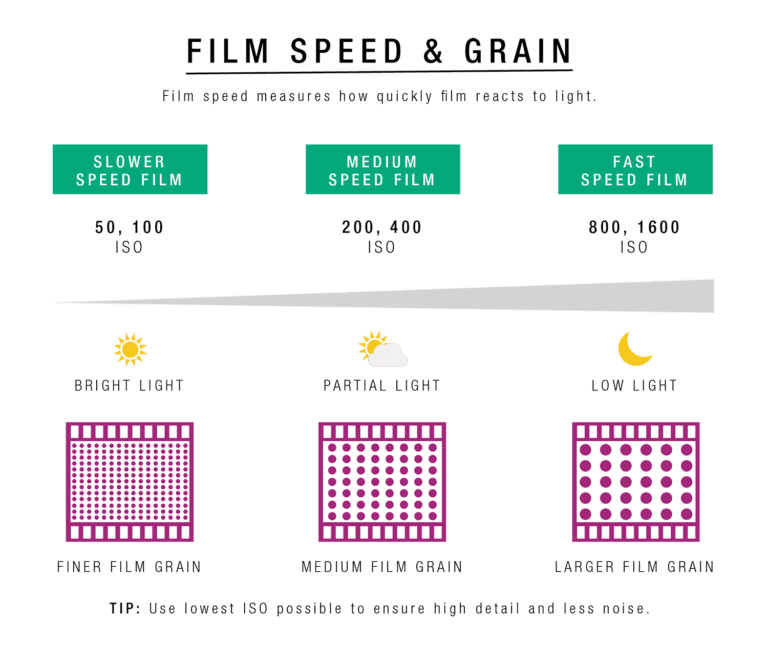The Basics of Grain in Photos
Hey film enthusiasts! Here’s a cool tip straight from Fujifilm about the fascinating world of film speed (ISO) and how it affects that classic grainy look we all know and love.
So, film “grain” is basically the look of the silver halide particles in the film’s emulsion after it’s been exposed and processed. This graininess is a visual effect that changes based on the type of film you’re using and how closely you’re looking at the image, whether it’s printed out or on your screen.
Different film stocks have different sized silver halide grains. Bigger grains mean the film is more sensitive to light, which is why high-speed films (like ISO 400 and up) have larger grains. On the flip side, fine-grain films are usually slower speed, meaning they need more light or longer exposure times compared to their grainier, faster-speed counterparts.
When we talk about resolution in film, it’s kind of like talking about sharpness. It depends on both the size of the film grain and the quality of the lenses you’re using. Unlike digital camera resolution, film resolution is all about how well your lenses can pick up fine details without distorting them. This is tested by using parallel lines that get closer and closer until they blend together.
But remember, the size of the film grain plays a big role too. Large grains can’t capture fine details as well as small grains, so if you’re all about those intricate details, go for slower speed films. Manufacturers often share test data about resolution in the form of “MTF curves” if you want to get really technical about it.

Resolution is generally similar to the idea of “sharpness” and depends on both the size of film grain, and the quality of lenses used. Film resolution is not the same as digital camera resolution. Good lenses are able to discern very fine details without distortion, and are measured by using parallel lines that get closer and closer together to see at what point the lines merge together.
But the size of film grain also affects how finely the final image can discern details. Large grains (crystals) will not be able to reproduce fine details as well as small grains, so if detail is most important, you should use slower speed films. Manufacturers usually publish test data about resolution in the form of “MTF curves.”

Let’s break it down: Film Grain Basics
Film Grain: Visible appearance of silver halide particles in processed film.
Visual Effect: Changes based on film type and viewing distance (print or screen).
ISO and Grain Size
High-Speed Films (ISO 400+):
Larger Grains
More Light Sensitivity
Shorter Exposure Times
More Visible Grain
Resolution and Sharpness
Lens Quality:
Larger Grains: Lower resolution, less detail.
Smaller Grains: Higher resolution, better detail.
Depends on film grain size and lens quality.
Good lenses discern fine details without distortion.
Tested using parallel lines until they merge (MTF curves).
Tips for Choosing Film
For Fine Details: Use slower speed films with smaller grains.
For Light Sensitivity: Use higher speed films with larger grains.
MTF Curves
MTF Curves: Manufacturers provide data on film resolution.
Technical Insight: Use MTF curves for detailed technical analysis.
Quick Reference
High ISO = Larger Grains = More Grain, More Light Sensitivity, Less Detail
Low ISO = Smaller Grains = Less Grain, Less Light Sensitivity, More Deta
Explore different ISOs to see how they change the look and vibe of your photos! So there you have it! Dive into the world of film with this handy tip and see how different ISOs can change the whole vibe of your photos. Happy shooting! 📸
